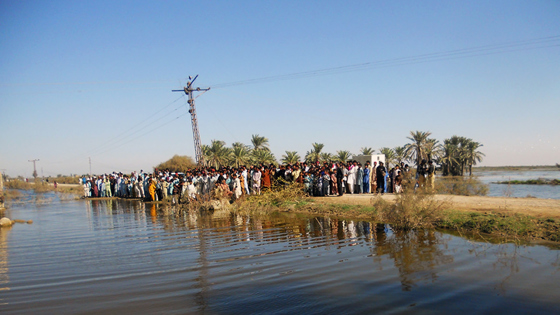Environmentally displaced people
Historical archive
Published under: Solberg's Government
Publisher: Ministry of Foreign Affairs
Article | Last updated: 24/07/2015
The number of environmentally displaced persons – people who have been forced to flee their homes because of climate change or natural disasters – is growing all the time. The number varies dramatically from year to year, and it is difficult to establish with any certainty. According to estimates by the Internal Displacement Monitoring Centre (IDMC), around 185 million people were displaced by disasters in the period 2008–14. The majority of these were internally displaced, and could return to their homes after a short period of time.
The areas where people are most at risk of environmental displacement are in Asia. Typhoon Haiyan, which hit central parts of the Philippines in November 2013, was stronger than any previous typhoon, and a reminder of human vulnerability even in countries used to extreme weather events.

The vast majority of environmentally displaced persons flee because of extreme weather events, but earthquakes and volcanic eruptions are also frequently the reason. In the future we must also expect that many people will have to flee their homes as a result of the long-term effects of climate change, such as rising sea levels and drought.
Through the Nansen Initiative, Norway and Switzerland have, in cooperation with other countries, sought to increase knowledge and awareness about people displaced across international borders in the context of disasters and the effects of climate change. The Nansen Initiative was launched in 2012, and is due to end in the autumn of 2015. Recognition of the substantial regional differences in terms of the challenges that people face is an important guiding principle for the work that is being done. This must be reflected in the response, and applies to all areas, including climate change adaptation, humanitarian efforts and provisional protection measures.